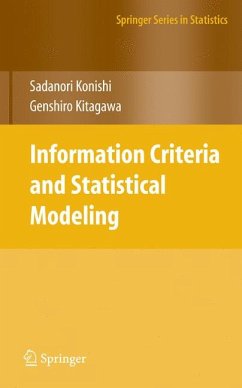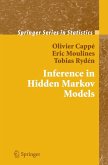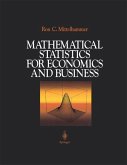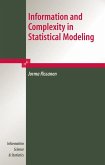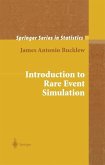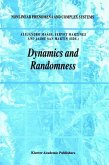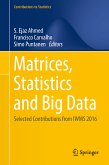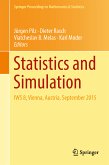The Akaike information criterion (AIC) derived as an estimator of the Kullback-Leibler information discrepancy provides a useful tool for evaluating statistical models, and numerous successful applications of the AIC have been reported in various fields of natural sciences, social sciences and engineering.
One of the main objectives of this book is to provide comprehensive explanations of the concepts and derivations of the AIC and related criteria, including Schwarz's Bayesian information criterion (BIC), together with a wide range of practical examples of model selection and evaluation criteria. A secondary objective is to provide a theoretical basis for the analysis and extension of information criteria via a statistical functional approach. A generalized information criterion (GIC) and a bootstrap information criterion are presented, which provide unified tools for modeling and model evaluation for a diverse range of models, including various types of nonlinear models and model estimation procedures such as robust estimation, the maximum penalized likelihood method and a Bayesian approach.
Sadanori Konishi is Professor of Faculty of Mathematics at Kyushu University. His primary research interests are in multivariate analysis, statistical learning, pattern recognition and nonlinear statistical modeling. He is the editor of the Bulletin of Informatics and Cybernetics and is co-author of several Japanese books. He was awarded the Japan Statistical Society Prize in 2004 and is a Fellow of the American Statistical Association.
Genshiro Kitagawa is Director-General of the Institute of Statistical Mathematics and Professor of Statistical Science at the Graduate University for Advanced Study. His primary interests are in time series analysis, non-Gaussian nonlinear filtering and statistical modeling. He is the executive editor of the Annals of theInstitute of Statistical Mathematics, co-author of Smoothness Priors Analysis of Time Series, Akaike Information Criterion Statistics, and several Japanese books. He was awarded the Japan Statistical Society Prize in 1997 and Ishikawa Prize in 1999, and is a Fellow of the American Statistical Association.
Dieser Download kann aus rechtlichen Gründen nur mit Rechnungsadresse in A, B, BG, CY, CZ, D, DK, EW, E, FIN, F, GR, HR, H, IRL, I, LT, L, LR, M, NL, PL, P, R, S, SLO, SK ausgeliefert werden.

